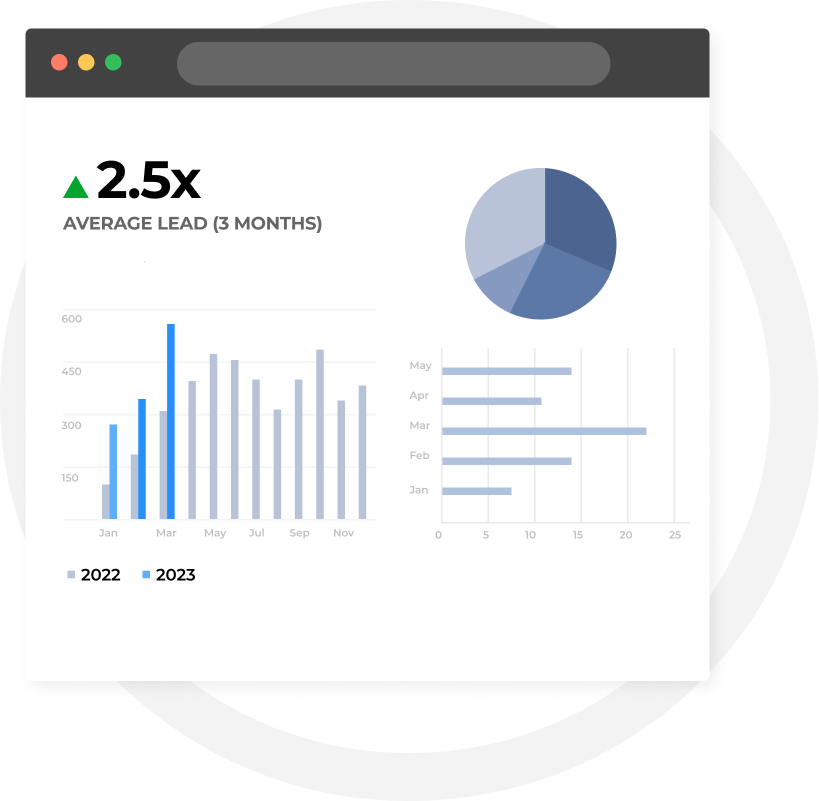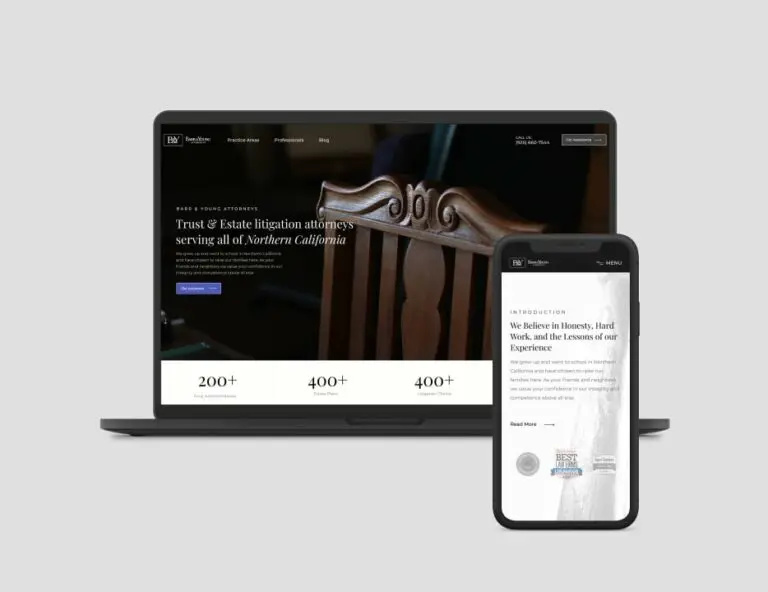Personal Injury Marketing Company
Grow your law firm's online presence and get more personal injury clients!
Select goals you want to achieve
We are Recognized as a Leading Lawyer Marketing Agency
Helping Personal Injury Lawyers
Since 2008
How Digital Marketing Helps Personal Injury Law Firms Grow
- Targeted Reach
Focus on specific demographics and geographic areas, connecting with those who need your expertise and services. Spend your budget efficiently and reach prospective clients at the right time and place. - Trust-building Through Content
Create valuable, informative content to establish your firm as a knowledgeable and trustworthy resource. Build credibility and position your firm as the go-to expert in the legal industry. - Measurable Results and Adaptability
Track real-time performance with detailed analytics. A data-driven approach quickly adapts strategies, optimizes campaigns, and maximizes ROI. - 24/7 Client Acquisition
Your online presence works around the clock, providing information and contact options when potential clients need them most. Never miss an opportunity to connect with someone in need of legal representation.





* Typical results generated for our clients in the first year of our engagement.
Why Personal Injury Lawyers Choose Comrade
Want a 300% increase in client queries? How about a 900% boost in organic traffic? We’ve achieved this for our clients and can do it for you. Don’t believe us? Take a look at our case studies.
Our team understands the nuances of personal injury law. We craft marketing strategies that resonate with potential clients, navigate ethical guidelines, and highlight your firm’s strengths.
A decade of refining our approach has made Comrade a leader in personal injury lawyer marketing. We’ve weathered industry shifts, adapted to algorithm changes, and consistently delivered results.
Proven Lawyer Marketing Results
Personal Injury Marketing Services
Over 330 clients rely on Comrade's Services
Take your law firm to the next level. Book a complimentary audit today
- Firm’s Reputation
- Web Presence
- Rank Competitors
- Potential Demand
- Website Performance
- Overall Score

Here's What Personal Injury Attorneys Need to Know About Marketing
How can I attract more personal injury clients through online marketing?
Attracting more personal injury clients online starts with a strong digital presence.
-
Build a user-friendly personal injury website that showcases your expertise and success stories. Optimize it for search engines to improve visibility when potential clients seek help.
-
Content is crucial—create informative blog posts, videos, and FAQs addressing common personal injury concerns. This will demonstrate your knowledge and bolster SEO.
-
Leverage social media to engage with your community and share valuable insights. Consider targeted pay-per-click advertising to reach people actively searching for legal help.
-
Encourage satisfied clients to share their experiences on your Google My Business profile and other attorney directories.
-
Finally, use email marketing to nurture leads and stay top-of-mind. Remember, it’s about building trust and positioning yourself as the go-to personal injury attorney or law firm.
-
What are the key components of a successful personal injury marketing strategy?
A winning personal injury marketing strategy is about the right mix. Start with a sharp, user-friendly website—it’s your digital storefront, after all. Then, ensure you’re showing up in search results with solid SEO. Content is king, so share your expertise through blogs and videos.
Be sure to utilize social media; it’s where your clients are. Strategic advertising will also boost your firm, but remember; your reputation is everything. Make sure you cultivate and share positive reviews. Networking still matters—get out there and connect. And once those leads start coming in, have a system to manage them effectively.
Keep an eye on your data, and be ready to pivot your digital marketing when needed.
How can I measure the ROI of my personal injury marketing efforts?
Start with Google Analytics for crucial insights into website performance and user behavior. Complement this with call-tracking software to link phone inquiries to specific marketing channels. (A robust CRM system is essential for following leads through your entire client lifecycle.)
Don’t overlook the power of social media analytics in gauging engagement and reach. Legal-specific marketing platforms can offer industry-tailored insights that generic tools might miss. Implement client intake forms to capture valuable data on how clients discover your firm.
The key is integrating these tools for a comprehensive view of your marketing performance. Regularly calculate cost per lead and acquisition to clarify which strategies drive growth so you can refine efforts and maximize marketing investment.
Should I hire a lawyer marketing agency to grow my personal injury law firm?
Yes, you absolutely should. A specialized agency boosts client acquisition efforts through targeted digital strategies. They’ll enhance your online presence, making your firm more visible to potential clients searching for legal services. Professional branding will set you apart in a competitive market, while increased social engagement will build trust and credibility.
An agency will also position you as a thought leader in personal injury law, attracting high-value cases. Moreover, they’ll implement strategies for client retention, ensuring long-term success. Comrade Web’s expertise in the legal sector maximizes marketing spend and law firm growth.
Contact us to schedule a no strings attached free consultation with a legal marketing expert

We will evaluate:
- How fast your website loads
- Backlink quality (and determine if any may lead to penalties on Google)
- SEO performance based on 20 unique factors
- Content performance
- Conversion rate (how many website visitors become client leads)
Each performance evaluation comes with a plan of action to help generate positive results for your law practice.

Let's Get Started
Chat With Our Specialists or Call Us
(872) 242 1074












